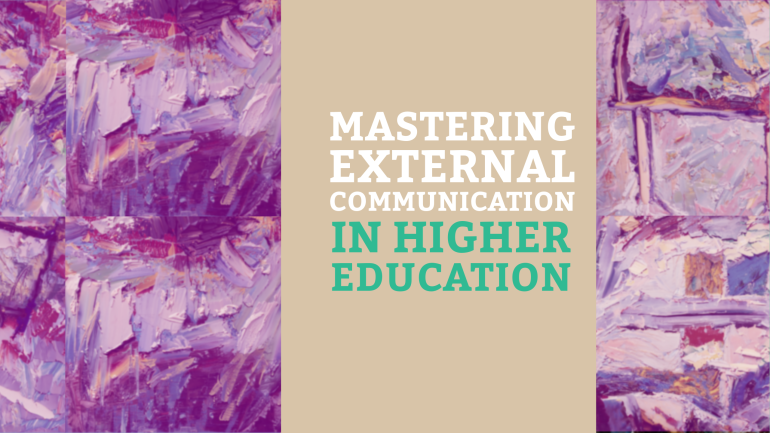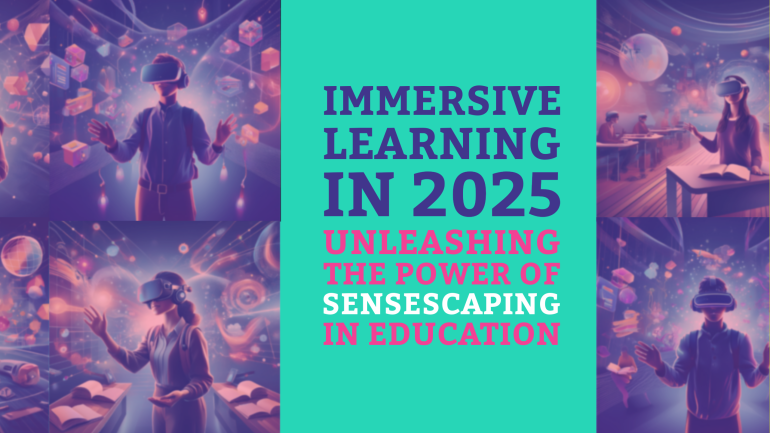Table of Contents
TL;DR: Boosting Institutional Impact through Strategic External Communication
- Consistent Messaging: It is crucial for higher education institutions to maintain consistent messaging across all external communication channels to build a strong and coherent brand identity.
- Understanding Audience: Tailoring communication strategies to the specific needs and preferences of various stakeholders such as prospective students, alumni, donors, and the community is necessary for effective external communication.
- Utilizing Multiple Platforms: Higher education institutions should leverage a variety of communication platforms including social media, websites, email, and traditional media to reach diverse audiences and maximize impact.
- Engagement and Interaction: Encouraging engagement and interaction through two-way communication channels fosters relationships, builds trust, and enhances the reputation of the institution.
- Measuring Success: Implementing tools to track the effectiveness of external communication efforts, such as analytics, surveys, and feedback mechanisms, is necessary for continuous improvement and to ensure that goals are being met.
Many educational institutions struggle with effectively communicating their message to external stakeholders. In the competitive landscape of higher education, clear and strategic external communication is crucial for attracting prospective students, engaging with alumni, establishing partnerships, and securing funding. Mastering this aspect of communication can positively impact an institution’s reputation, enrollment numbers, and financial stability.
Understanding the External Communication Landscape
You must comprehend the intricate web of external communication in higher education to truly master it. Universities and colleges operate within a dynamic environment where various entities demand attention and engagement. By understanding the external communication landscape, you can navigate these complexities with finesse and effectiveness.
Defining the Audiences in Higher Education
An important first step in mastering external communication is defining the key audiences in higher education. These can include current and prospective students, alumni, parents, donors, government agencies, industry partners, media outlets, and the public at large. Each of these audiences has distinct needs, interests, and expectations, necessitating tailored communication strategies to effectively engage with them.
Analyzing the Communication Channels
External communication in higher education relies on a myriad of channels to reach and engage with its various audiences effectively. This can include traditional channels such as press releases, newsletters, and direct mail, as well as digital channels like social media, websites, email newsletters, and online advertising. Understanding the strengths and weaknesses of each channel is crucial in developing a comprehensive communication strategy that leverages the most effective ones to achieve desired outcomes.
Analysing the Communication Channels in higher education also involves assessing the relevance and impact of emerging trends such as influencer partnerships, podcasting, virtual events, and interactive content. Embracing new and innovative channels can provide universities and colleges with a competitive edge in reaching and engaging with their audiences in today’s digital landscape.
Developing an External Communication Strategy
Setting Clear Objectives and Goals
Setting clear objectives and goals is crucial in developing an effective external communication strategy for higher education institutions. Keep in mind that your objectives should be specific, measurable, achievable, relevant, and time-bound (SMART). By defining these objectives, you can align your communication efforts with the overall goals of your institution and measure the success of your initiatives.
Crafting Consistent Messaging
Setting a consistent messaging framework is imperative for maintaining a strong and coherent brand image in the eyes of your external stakeholders. All communications, whether they come from the admissions office, marketing department, or faculty members, should reflect the same core values and key messages of the institution. This ensures that your audience receives a unified and consistent message about who you are and what you stand for.
External communication efforts should focus on creating a positive image of the institution, highlighting its strengths and unique selling points. By crafting messages that convey these key attributes, you can differentiate your institution from competitors and attract prospective students, donors, and partners. Consistency in messaging also builds trust and credibility with external stakeholders, reinforcing their confidence in the institution’s brand.
Harnessing the Power of Digital Media
Now more than ever, higher education institutions must master the art of external communication through digital media. From social media platforms to institutional websites, digital channels play a critical role in reaching and engaging with various stakeholders including prospective students, current students, alumni, donors, and the broader community.
Leveraging Social Media for Engagement and Outreach
Harnessing the power of social media is important for higher education institutions to effectively engage with their audiences and expand their outreach. Platforms like Facebook, Twitter, Instagram, and LinkedIn offer unique opportunities to share campus news, showcase student achievements, promote events, and interact with followers in real-time. By crafting compelling content, utilizing multimedia elements, and leveraging analytics to track engagement, universities can cultivate a strong online presence and foster meaningful connections with their community.
Optimizing Websites and Online Presence
Any institution, regardless of size or budget, can benefit from optimizing its website and online presence. A user-friendly and visually appealing website is often the first point of contact for many stakeholders seeking information about the institution. It is imperative to ensure that the website is mobile-responsive, easy to navigate, and contains up-to-date content that accurately reflects the institution’s values, mission, and offerings.
Right now, having a strong online presence is not just a nicety but a necessity for higher education institutions looking to stay competitive in a digital age. By optimizing websites and online platforms, universities can showcase their strengths, engage with their audience effectively, and ultimately drive key organizational goals and objectives.
Engaging with Traditional Media
Despite the rise of digital media, traditional media outlets such as newspapers, magazines, radio, and television still play a significant role in shaping public opinion and influencing the narrative. Engaging with traditional media is necessary for higher education institutions to reach a broader audience and establish credibility.
Crafting Compelling Press Releases and Media Kits
Press releases and media kits are crucial tools for communicating important announcements, research findings, events, and other newsworthy information to traditional media outlets. To craft compelling content, it is necessary to follow the inverted pyramid structure, starting with the most critical information at the beginning and providing additional details later. Include relevant quotes, high-quality images, and contact information to make it easy for journalists to cover the story.
Relationship Management with Media Representatives
The relationship management with media representatives is a critical aspect of engaging with traditional media. Building and maintaining positive relationships with journalists, reporters, and editors can lead to increased media coverage and positive publicity for the institution. It is necessary to establish trust, provide timely and accurate information, and be responsive to media inquiries.
Compelling pitches and story ideas that are tailored to the interests of specific media outlets can help capture the attention of journalists and secure media coverage. In addition to proactive outreach, it is crucial to monitor media coverage, respond to media inquiries promptly, and provide access to key faculty members or experts for interviews or comments.
Crisis Communication and Reputation Management
Once again, effective crisis communication and reputation management play a critical role in maintaining a positive image for higher education institutions. In times of crisis, whether it be a natural disaster, student protest, financial scandal, or any other unexpected event, how an institution responds can significantly impact its reputation and public perception.
Preparing for Potential Crises
Any higher education institution must have a comprehensive crisis communication plan in place to address a wide range of potential crises. This involves identifying key stakeholders, establishing communication protocols, designating a crisis management team, and conducting training exercises to ensure all staff are prepared to respond swiftly and appropriately in the event of an emergency.
Responding to Crises and Preserving Institutional Reputation
For higher education institutions, responding to crises effectively is not only about managing the immediate situation but also about preserving the institution’s reputation in the long term. Proactive and transparent communication, swift action, and a focus on the well-being of students, staff, and the community are necessary in rebuilding trust and credibility.
Responding promptly and honestly to any crisis is crucial for minimizing damage and maintaining a positive reputation. By taking ownership of the situation, demonstrating empathy, and outlining steps being taken to address the issue, institutions can mitigate negative publicity and emerge from crises with their reputation intact.
Measuring the Effectiveness of External Communications
Setting Benchmarks and Key Performance Indicators
To effectively measure the effectiveness of external communications in higher education, it is crucial to establish clear benchmarks and key performance indicators (KPIs) from the outset. These benchmarks should be aligned with the institution’s overall strategic goals, such as increasing student enrollment, enhancing reputation, or fostering community engagement. KPIs could include metrics like website traffic, social media engagement, press coverage, or attendance at events. Regularly monitoring these indicators will provide insight into the impact of external communications efforts and allow for adjustments to be made in real time.
Continuous Improvement and Iterative Strategy
On the path to mastering external communication in higher education, the process of continuous improvement and iterative strategy plays a pivotal role. By analyzing the results of the established benchmarks and KPIs, institutions can identify areas for enhancement and innovation in their communication strategies. This iterative approach allows for flexibility and adaptability in response to changing trends and stakeholder needs, ultimately leading to more effective and impactful external communications.
Performance monitoring should not be viewed as a one-time exercise, but rather an ongoing commitment to excellence in external communications. By consistently evaluating outcomes, implementing improvements, and refining strategies, higher education institutions can stay ahead of the curve in a competitive landscape and ensure their messages resonate with their target audiences.
Final Words
From above discussions, mastering external communication in higher education is crucial for institutions to maintain a positive reputation, attract prospective students, engage with current students effectively, and foster relationships with various stakeholders. By utilizing various communication channels, crafting compelling messaging, and being transparent and responsive, universities can build trust, credibility, and strengthen their brand in the competitive higher education landscape. It is important for institutions to continuously assess and improve their external communication strategies to stay relevant and competitive in today’s digital era.
FAQ
Q: What is external communication in higher education?
A: External communication in higher education refers to the way educational institutions interact and engage with individuals, organizations, and the public outside of their own campus community. This includes communication with prospective students, alumni, donors, government agencies, media outlets, and the local community.
Q: Why is mastering external communication important in higher education?
A: Mastering external communication is crucial for higher education institutions to build and maintain their reputation, attract prospective students, engage with alumni and donors, secure partnerships, and promote their academic programs and research initiatives. Effective external communication can enhance the institution’s visibility and credibility.
Q: What are some key strategies for mastering external communication in higher education?
A: Some key strategies for mastering external communication in higher education include defining clear communication goals, identifying target audiences, utilizing multiple communication channels (such as social media, websites, email newsletters, and traditional media), creating compelling content, establishing strong relationships with media outlets, and monitoring and evaluating communication efforts.
Q: How can higher education institutions improve their social media presence for external communication?
A: Higher education institutions can improve their social media presence by developing a cohesive social media strategy, engaging with their audience through regular and interactive posts, sharing authentic and relevant content, utilizing visuals to enhance engagement, monitoring and responding to comments and messages, and analyzing data to measure the effectiveness of their social media efforts.
Q: How can higher education institutions engage with the local community through external communication?
A: Higher education institutions can engage with the local community through external communication by organizing community outreach events, collaborating with local businesses and organizations, promoting educational programs and resources to the community, sharing research findings that can benefit the local area, and listening to and addressing the needs and concerns of community members.




